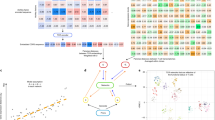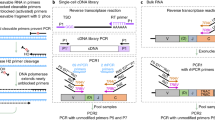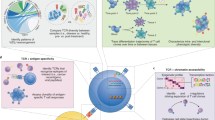Abstract
Monitoring the T cell receptor (TCR) repertoire in health and disease can provide key insights into adaptive immune responses, but the accuracy of current TCR sequencing (TCRseq) methods is unclear. In this study, we systematically compared the results of nine commercial and academic TCRseq methods, including six rapid amplification of complementary DNA ends (RACE)-polymerase chain reaction (PCR) and three multiplex-PCR approaches, when applied to the same T cell sample. We found marked differences in accuracy and intra- and inter-method reproducibility for T cell receptor α (TRA) and T cell receptor β (TRB) TCR chains. Most methods showed a lower ability to capture TRA than TRB diversity. Low RNA input generated non-representative repertoires. Results from the 5′ RACE-PCR methods were consistent among themselves but differed from the RNA-based multiplex-PCR results. Using an in silico meta-repertoire generated from 108 replicates, we found that one genomic DNA-based method and two non-unique molecular identifier (UMI) RNA-based methods were more sensitive than UMI methods in detecting rare clonotypes, despite the better clonotype quantification accuracy of the latter.
This is a preview of subscription content, access via your institution
Access options
Access Nature and 54 other Nature Portfolio journals
Get Nature+, our best-value online-access subscription
$29.99 / 30 days
cancel any time
Subscribe to this journal
Receive 12 print issues and online access
$209.00 per year
only $17.42 per issue
Buy this article
- Purchase on Springer Link
- Instant access to full article PDF
Prices may be subject to local taxes which are calculated during checkout





Similar content being viewed by others
Data availability
All the fastq data obtained in this study, including the Jurkat Clone E6-1 (ATCC TIB152) cell line TCR α and β sequences, were deposited in the National Center for Biotechnology Information Sequence Read Archive repository following MiAIRR standard recommendations47 under the BioProject ID PRJNA548335. The aligned sequence data will be stored in an iReceptor Repository at Sorbonne Université as a repository in the AIRR Data Commons and can be explored and downloaded through the iReceptor Gateway65 (https://gateway.ireceptor.org). Source data for TCRVβ flow cytometry data are provided as Supplementary Fig. 4a,b. All other data are available from the corresponding author upon reasonable request.
Code availability
All software packages and programs are publicly available and open source. Scripts used to analyze the data with MiXCR are available from https://mixcr.milaboratory.com. Decombinator is available from https://github.com/innate2adaptive/Decombinator. MiGEC is available from https://github.com/mikessh/migec. Detailed VDJ rearrangement statistics scripts are available from https://github.com/antigenomics/repseq-protocol-comparison. There is no restriction on the use of the code or data.
References
Cui, J.-H. et al. TCR repertoire as a novel indicator for immune monitoring and prognosis assessment of patients with cervical cancer. Front. Immunol. 9, 2729 (2018).
Davis, M. M. The αβ T cell repertoire comes into focus. Immunity 27, 179–180 (2007).
Lindau, P. & Robins, H. S. Advances and applications of immune receptor sequencing in systems immunology. Curr. Opin. Syst. Biol. 1, 62–68 (2017).
Miles, J. J., Douek, D. C. & Price, D. A. Bias in the αβ T-cell repertoire: implications for disease pathogenesis and vaccination. Immunol. Cell Biol. 89, 375 (2011).
Schrama, D., Ritter, C. & Becker, J. C. T cell receptor repertoire usage in cancer as a surrogate marker for immune responses. Semin. Immunopathol. 39, 255–268 (2017).
Heather, J. M. et al. Dynamic perturbations of the T-cell receptor repertoire in chronic HIV infection and following antiretroviral therapy. Front. Immunol. 6, 644 (2016).
Howson, L. J. et al. MAIT cell clonal expansion and TCR repertoire shaping in human volunteers challenged with Salmonella Paratyphi A. Nat. Commun. 9, 253 (2018).
Pogorelyy, M. V. et al. Precise tracking of vaccine-responding T cell clones reveals convergent and personalized response in identical twins. Proc. Natl Acad. Sci. USA 115, 12704–12709 (2018).
Sycheva, A. L. et al. Quantitative profiling reveals minor changes of T cell receptor repertoire in response to subunit inactivated influenza vaccine. Vaccine 36, 1599–1605 (2018).
Hogan, S. A. et al. Peripheral blood TCR repertoire profiling may facilitate patient stratification for immunotherapy against melanoma. Cancer Immunol. Res. 7, 77–85 (2019).
Jin, Y. et al. TCR repertoire profiling of tumors, adjacent normal tissues, and peripheral blood predicts survival in nasopharyngeal carcinoma. Cancer Immunol. Immunother. 67, 1719–1730 (2018).
Wieland, A. et al. T cell receptor sequencing of activated CD8 T cells in the blood identifies tumor-infiltrating clones that expand after PD-1 therapy and radiation in a melanoma patient. Cancer Immunol. Immunother. 67, 1767–1776 (2018).
Six, A. et al. The past, present, and future of immune repertoire biology – the rise of next-generation repertoire analysis. Front. Immunol. 4, 413 (2013).
Chien, Y. H., Gascoigne, N. R., Kavaler, J., Lee, N. E. & Davis, M. M. Somatic recombination in a murine T-cell receptor gene. Nature 309, 322–326 (1984).
Davis, M. M. & Bjorkman, P. J. T-cell antigen receptor genes and T-cell recognition. Nature 334, 395–402 (1988).
Lefranc, M.-P. Nomenclature of the human T cell receptor genes. Curr. Protoc. Immunol. 40, A.1O.1–A.1O.23 (2000).
Dupic, T., Marcou, Q., Walczak, A. M. & Mora, T. Genesis of the αβ T-cell receptor. PLoS Comput. Biol. 15, e1006874 (2019).
Robins, H. S. et al. Comprehensive assessment of T-cell receptor β-chain diversity in αβ T cells. Blood 114, 4099–4107 (2009).
Warren, R. L. et al. Exhaustive T-cell repertoire sequencing of human peripheral blood samples reveals signatures of antigen selection and a directly measured repertoire size of at least 1 million clonotypes. Genome Res. 21, 790–797 (2011).
Qi, Q. et al. Diversity and clonal selection in the human T-cell repertoire. Proc. Natl Acad. Sci. USA 111, 13139–13144 (2014).
Greiff, V., Miho, E., Menzel, U. & Reddy, S. T. Bioinformatic and statistical analysis of adaptive immune repertoires. Trends Immunol. 36, 738–749 (2015).
Wang, C. et al. High throughput sequencing reveals a complex pattern of dynamic interrelationships among human T cell subsets. Proc. Natl Acad. Sci. USA 107, 1518–1523 (2010).
Zhang, W. et al. IMonitor: a robust pipeline for TCR and BCR repertoire analysis. Genetics 201, 459–472 (2015).
Douek, D. C. et al. A novel approach to the analysis of specificity, clonality, and frequency of HIV-specific T cell responses reveals a potential mechanism for control of viral escape. J. Immunol. 168, 3099–3104 (2002).
Eugster, A. et al. Measuring T cell receptor and T cell gene expression diversity in antigen-responsive human CD4+ T cells. J. Immunol. Methods 400–401, 13–22 (2013).
Mamedov, I. Z. et al. Preparing unbiased T-cell receptor and antibody cDNA libraries for the deep next generation sequencing profiling. Front. Immunol. 4, 456 (2013).
Shugay, M. et al. Towards error-free profiling of immune repertoires. Nat. Methods 11, 653–655 (2014).
Oakes, T. et al. Quantitative characterization of the T cell receptor repertoire of naïve and memory subsets using an integrated experimental and computational pipeline which is robust, economical, and versatile. Front. Immunol. 8, 1267 (2017).
Liu, X. et al. Systematic comparative evaluation of methods for investigating the TCRβ repertoire. PLoS ONE 11, e0152464 (2016).
Rosati, E. et al. Overview of methodologies for T-cell receptor repertoire analysis. BMC Biotechnol. 17, 61 (2017).
Dunn-Walters, D., Townsend, C., Sinclair, E. & Stewart, A. Immunoglobulin gene analysis as a tool for investigating human immune responses. Immunol. Rev. 284, 132–147 (2018).
Doenecke, A., Winnacker, E.-L. & Hallek, M. Rapid amplification of cDNA ends (RACE) improves the PCR-based isolation of immunoglobulin variable region genes from murine and human lymphoma cells and cell lines. Leukemia 11, 1787–1792 (1997).
Nielsen, S. C. A. & Boyd, S. D. Human adaptive immune receptor repertoire analysis—past, present, and future. Immunol. Rev. 284, 9–23 (2018).
Thomas, N., Heather, J., Ndifon, W., Shawe-Taylor, J. & Chain, B. Decombinator: a tool for fast, efficient gene assignment in T-cell receptor sequences using a finite state machine. Bioinformatics 29, 542–550 (2013).
Taylor, S., Yasuyama, N. & Farmer, A. A SMARTer approach to profiling the human T-cell receptor repertoire. J. Immunol. 196, 209.5 (2016).
Bolotin, D. A. et al. MiXCR: software for comprehensive adaptive immunity profiling. Nat. Methods 12, 380–381 (2015).
Yokota, R., Kaminaga, Y. & Kobayashi, T. J. Quantification of inter-sample differences in T-cell receptor repertoires using sequence-based information. Front. Immunol. 8, 1500 (2017).
Gudikote, J. P. & Wilkinson, M. F. T-cell receptor sequences that elicit strong down-regulation of premature termination codon-bearing transcripts. EMBO J. 21, 125–134 (2002).
Schulze-Koops, H. Lymphopenia and autoimmune diseases. Arthritis Res. Ther. 6, 178–180 (2004).
Miho, E. et al. Computational strategies for dissecting the high-dimensional complexity of adaptive immune repertoires. Front. Immunol. 9, 224 (2018).
Kivioja, T. et al. Counting absolute numbers of molecules using unique molecular identifiers. Nat. Methods 9, 72–74 (2012).
Britanova, O. V. et al. Dynamics of individual T cell repertoires: from cord blood to centenarians. J. Immunol. 196, 5005–5013 (2016).
Brüggemann, M. et al. Standardized next-generation sequencing of immunoglobulin and T-cell receptor gene recombinations for MRD marker identification in acute lymphoblastic leukaemia; a EuroClonality-NGS validation study. Leukemia 33, 2241–2253 (2019).
Knecht, H. et al. Quality control and quantification in IG/TR next-generation sequencing marker identification: protocols and bioinformatic functionalities by EuroClonality-NGS. Leukemia 33, 2254–2265 (2019).
Friedensohn, S. et al. Synthetic standards combined with error and bias correction improve the accuracy and quantitative resolution of antibody repertoire sequencing in human naïve and memory B cells. Front. Immunol. 9, 1401 (2018).
Breden, F. et al. Reproducibility and reuse of adaptive immune receptor repertoire data. Front. Immunol. 8, 1418 (2017).
Rubelt, F. et al. Adaptive immune receptor repertoire community recommendations for sharing immune-repertoire sequencing data. Nat. Immunol. 18, 1274–1278 (2017).
Vander Heiden, J. A. et al. AIRR community standardized representations for annotated immune repertoires. Front. Immunol. 9, 2206 (2018).
Zhang, Y. et al. Tools for fundamental analysis functions of TCR repertoires: a systematic comparison. Brief. Bioinform. https://doi-org.eres.qnl.qa/10.1093/bib/bbz092 (2019).
Weber, C. R. et al. immuneSIM: tunable multi-feature simulation of B- and T-cell receptor repertoires for immunoinformatics benchmarking. Bioinformatics 36, 3594–3596 (2020).
Wickham, H. ggplot2: Elegant Graphics for Data Analysis (Springer, 2016).
Marcou, Q., Mora, T. & Walczak, A. M. High-throughput immune repertoire analysis with IGoR. Nat. Commun. 9, 561 (2018).
Murugan, A., Mora, T., Walczak, A. M. & Callan, C. G. Statistical inference of the generation probability of T-cell receptors from sequence repertoires. Proc. Natl Acad. Sci. USA 109, 16161–16166 (2012).
Horn, H. S. Measurement of “overlap” in comparative ecological studies. Am. Nat. 100, 419–424 (1966).
Jaccard, P. The distribution of the flora in the Alpine zone. New Phytol. 11, 37–50 (1912).
Sadee, C., Pietrzak, M., Seweryn, M. & Rempala, G. divo: Tools for Analysis of Diversity and Similarity in Biological Systems (Diversity and Overlap Analysis Package). https://rdrr.io/cran/divo/ (2017).
Kolde, R. pheatmap: pretty heatmaps. https://cran.r-project.org/web/packages/pheatmap/index.html (2019).
Renyi, A. On measures of information and entropy. In Proc. 4th Berkeley Symposium on Mathematical Statistics and Probability 547–561 (University of California Press, 1961).
Hill, M. O. Diversity and evenness: a unifying notation and its consequences. Ecology 54, 427–432 (1973).
Chaara, W. et al. RepSeq data representativeness and robustness assessment by shannon entropy. Front. Immunol. 9, 1038 (2018).
Hausser, J. & Strimmer, K. Estimation of Entropy, Mutual Information and Related Quantities. (2014).
Colwell, R. K. et al. Models and estimators linking individual-based and sample-based rarefaction, extrapolation and comparison of assemblages. J. Plant Ecol. 5, 3–21 (2012).
Hsieh, T. C., Ma, K. H. & Chao, A. Package iNEXT: Interpolation and Extrapolation for Species Diversity (2019).
Chao, A. et al. Rarefaction and extrapolation with Hill numbers: a framework for sampling and estimation in species diversity studies. Ecol. Monogr. 84, 45–67 (2014).
Corrie, B. D. et al. iReceptor: a platform for querying and analyzing antibody/B-cell and T-cell receptor repertoire data across federated repositories. Immunol. Rev. 284, 24–41 (2018).
Acknowledgements
We are grateful to M. Barbié for providing the human samples. This work benefited from equipment and services from the iGenSeq core facility at ICM. This work was supported the ERC-Advanced TRiPoD (322856), LabEx Transimmunom (ANR-11-IDEX-0004-02) and RHU iMAP (ANR-16-RHUS-0001) grants to D.K. E.M.F. is funded by the European Research Area Network-Cardiovascular Diseases (JCT2018 and ANR-18-ECVD-0001) and iReceptorPlus (H2020 Research and Innovation Programme 825821) grants. M.S. and D.M.C. were supported by a grant from the Ministry of Science and Higher Education of the Russian Federation (075−15−2019-1789). This work was funded, in part, by the intramural program of the National Institute of Allergy and Infectious Diseases (to D.C.D.). B.C. was supported by the National Institute for Health Research UCL Hospitals Biomedical Research. A.E. was supported by DFG CRTD (FZ 111). A.N.D. was supported by the Ministry of Education, Youth and Sports of the Czech Republic under project CEITEC 2020 (LQ1601). K.K. and P.P.R. were supported by the European Research Area Network-Cardiovascular Diseases (JCT2018 and AIR-MI Consortium) program.
Author information
Authors and Affiliations
Contributions
P.B., V.Q., E.S.E., A.N.D., I.U., M.I., T.O., A.E., S.D., A.R., K.K. and P.R. performed the experiments and raw data pre-processing. P.B., V.Q., M.S. and M.I. analyzed the data. E.M.F., D.M.C., B.C., D.C.D. and D.K. designed the experiments. P.B., D.K. and E.M.F. wrote the manuscript with input from all authors. D.K. and E.M.F. conceived the study, which was supervised by E.M.F. D.K., B.C., A.E., D.C.D., D.M.C., K.K. and M.S. obtained funding for the study.
Corresponding author
Ethics declarations
Competing interests
D.M.C. and M.S. are cofounders of MiLaboratory LLC. A.E., A.N.D., A.R., B.C., D.C.D., D.K., E.M.F., E.S.E., I.U., K.K., M.I., P.B., P.R., S.D., T.O. and V.Q. declare no conflicts of interest.
Additional information
Publisher’s note Springer Nature remains neutral with regard to jurisdictional claims in published maps and institutional affiliations.
Supplementary information
Supplementary Information
Supplementary Figs 1–10, Tables 1 and 2, and Methods
Supplementary Data 1
Source data used for rank calculations displayed in Table 1. (Raw data sheet corresponds to raw data used for rank values calculation; rank summary values sheet corresponds to details of rank calculations and values displayed in Table 1.)
Rights and permissions
About this article
Cite this article
Barennes, P., Quiniou, V., Shugay, M. et al. Benchmarking of T cell receptor repertoire profiling methods reveals large systematic biases. Nat Biotechnol 39, 236–245 (2021). https://doi.org/10.1038/s41587-020-0656-3
Received:
Accepted:
Published:
Issue Date:
DOI: https://doi.org/10.1038/s41587-020-0656-3
This article is cited by
-
Large-scale integrative analysis of juvenile idiopathic arthritis for new insight into its pathogenesis
Arthritis Research & Therapy (2024)
-
Adaptive immune receptor repertoire analysis
Nature Reviews Methods Primers (2024)
-
Potential of TCR sequencing in graft-versus-host disease
Bone Marrow Transplantation (2023)
-
Nivolumab plus ipilimumab in advanced salivary gland cancer: a phase 2 trial
Nature Medicine (2023)
-
Using synthetic chromosome controls to evaluate the sequencing of difficult regions within the human genome
Genome Biology (2022)



